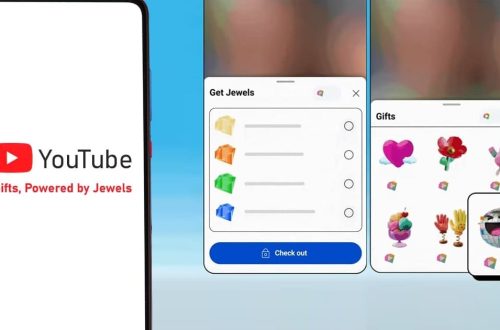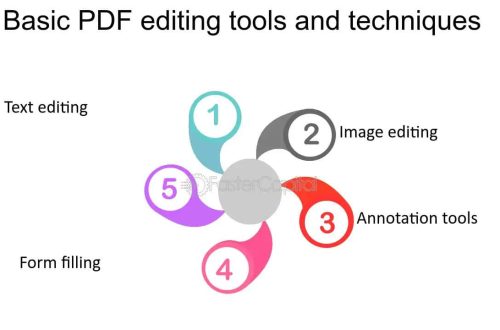The best fitness blogs aren’t just blogs that receive millions of visits every month and hide everything behind paywalls.
In fact, there are plenty of smaller blogs out there that’d be perfect to use as inspiration for your own fitness blog.
In this post, we rounded up the best health and fitness blog examples from around the web.
We even collected a few metrics for each using the following tools:
The list is arranged from the blog with the highest amount of traffic to the blog with the lowest amount of traffic.
The traffic metrics are averages from the last three months of traffic.
Let’s get into it.
The best health and fitness blog examples
- Nerd Fitness – A popular fitness blog with nerd-heavy branding.
- Breaking Muscle – Shares weightlifting guides and tips as well as the latest news from the industry.
- Mark’s Daily Apple – Home of the blog of the founder of Primal Kitchen, a popular health-food brand.
- Diary of a Fit Mommy – A personal fitness blog that follows the fitness journey of “fit mommy” Sia Cooper.
- Bad Yogi – An alternative Yoga brand aimed at making the yoga community more accessible.
- Love Sweat Fitness – An online fitness community for women that publishes workout and health-related guides and offers fitness products.
- keep it simpElle – A great resource for articles related to the fitness industry and professional workouts alike.
1. Nerd Fitness
DA: 66 | Traffic: 1.2 million per month | Load Time: 1.41s | CMS: N/A
Nerd Fitness is one of the most successful fitness blogs on the web.
It’s a blog and fitness community that was founded by self-described nerd and fitness nut Steve Kamb.
Steve started the community as a way to “provide a fun place for nerds to learn about health and fitness, chat about gaming and comics, and live better lives.”
Now, he works with a team of 45, including additional writers and over 25 certified trainers.
Today, the blog receives over a million visits per month, and the brand’s various products have helped 50,000 customers get started on their fitness goals.
Nerd Fitness has even been featured by The New York Times, The Wall Street Journal, Forbes, The Washington Post and CNET.
Content
Nerd Fitness publishes new content a few times a month, and posts are published by a variety of different authors.
They publish personal stories, list posts, articles on specific exercises, healthy recipes, and health and fitness guides.
Posts are typically written in long-form format with a few images inserted here and there.
Some are personal images while others are stock photos and gifs that feature the brand’s nerd-centric style.
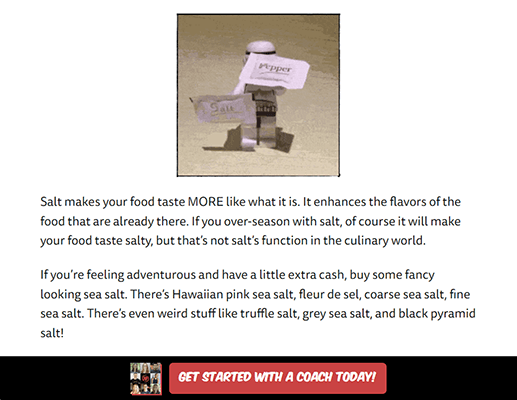
Some posts are hidden behind a paywall.
Income streams
Nerd Fitness’ income streams are entirely dependent on products and services they offer.
They don’t dabble in affiliate marketing, advertising or sponsorships as most blogs do.
They offer online coaching and in-person fitness camps instead.
Online coaching costs $197/month, while pricing for fitness retreats starts at $1,049.
They also offer a fitness journey app that has in-app purchases.
Social media activity
Nerd Fitness is active on Facebook, YouTube and Instagram, but they don’t receive many engagements on any platform.
They have 52,000 followers on Instagram.
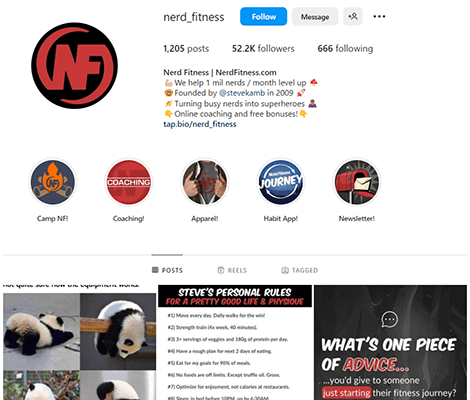
2. Breaking Muscle
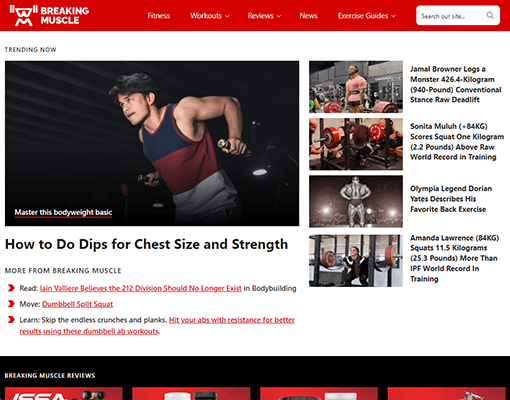
DA: 66 | Traffic: 699,500 per month | Load Time: 772ms | CMS: WordPress
Breaking Muscle is a fitness blog that focuses on weightlifting, hence the name.
Its team consists of writers, researchers, athletes and photographers, but its primary team members are Associate Editor Chris Colucci and Staff Writer Robert Zeglinski.
With an average of over 690,000 visits per month, Breaking Muscle has earned its spot as a powerhouse in the health and fitness industry.
Content
Breaking Muscle publishes new content several times a week, and sometimes several times a day.
Their primary categories are Fitness, Reviews, Healthy Eating, Workouts and News (this category contributes to their busy publishing schedule).
Workout topics typically include specific training areas, including shoulders, chest, biceps, triceps, back and legs.
The blog also publishes guides for specific types of workouts and equipment, including HIIT, kettlebells, bench presses, dumbbells, deadlift and various squat exercises.
News articles are typically written by Robert, but the rest of the blog’s content is written by a variety of different writers.
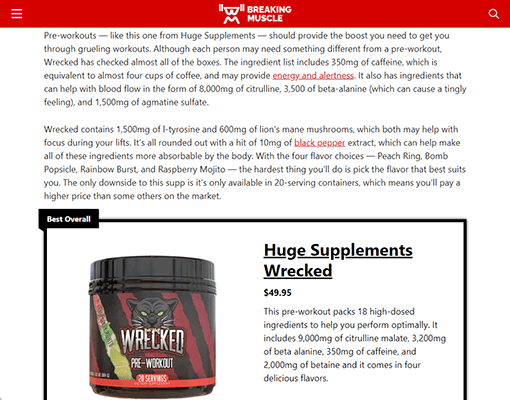
News articles are fairly short, as you can imagine.
Otherwise, the blog publishes medium to long-form content with a few stock images inserted throughout.
Income streams
Breaking Muscle uses several ads on blog post pages: one at the bottom of the viewport, one in the sidebar and a pop-up video ad that displays in the bottom, right-hand corner.
All three of these ads are sticky, so they follow the reader as they scroll.
Additional ads are sprinkled throughout the body sections of blog posts.
Breaking Muscle also uses affiliate links (including Amazon affiliate links) for fitness equipment and supplements they review and recommend.
Social media activity
Breaking Muscle is active on Facebook, Twitter and Instagram, but they don’t receive many engagements from any platform.
They have over 22,000 Instagram followers, but most posts only receive a few dozen likes each.
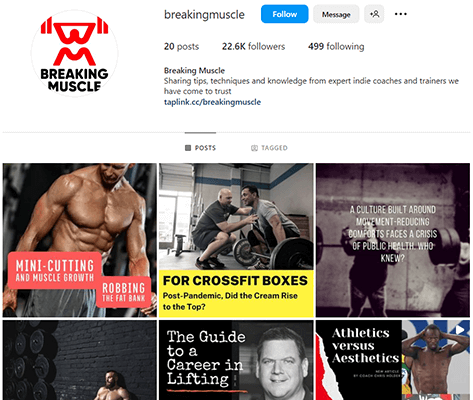
3. Mark’s Daily Apple
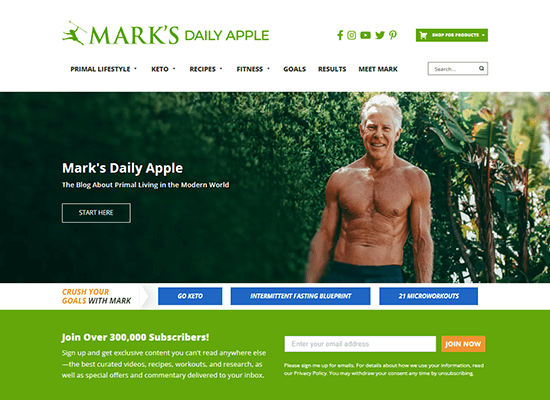
DA: 68 | Traffic: 421,800 per month | Load Time: 3.06s | CMS: WordPress
Mark’s Daily Apple is a fitness and health blog founded by Mark Sisson, a 66-year old health and fitness blogger that founded the blog in 2006 “to empower people to take full responsibility for their own health and enjoyment of life.”
However, you likely know Mark’s brand under a different name, Primal Kitchen.
Primal Kitchen is a line of plant-based salad dressings, cooking oils and sauces that can be found in stores all around the world.
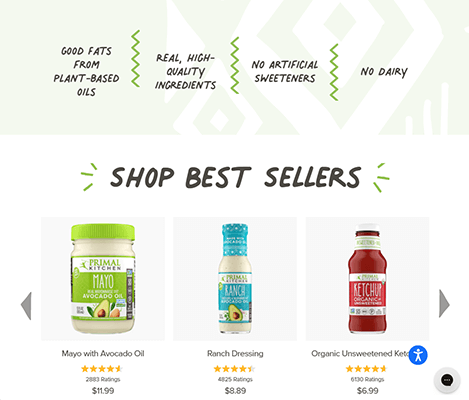
Despite the success of his health-food brand, Mark still maintains the blog regularly, publishing topics related to the keto diet, the “primal lifestyle,” and fitness.
Content
Mark’s Daily Apple publishes new content several times a week, all under Mark’s author name.
The blog’s primary categories are Primal Lifestyle, Keto, Recipes, Fitness, Goals and Results.
This more or less encompasses what Mark’s Daily Apple is all about: helping you achieve various fitness and health goals as a way to achieve a greater quality of life.
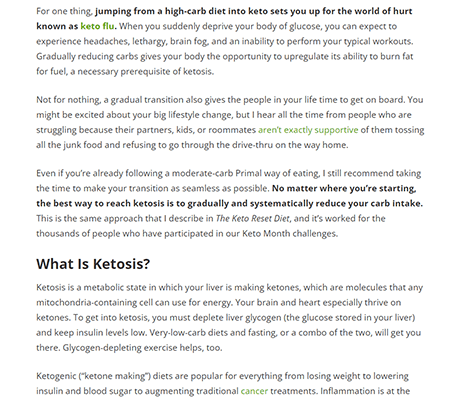
Most posts are quite short with little to no images, but some are written in medium format.
Income streams
Sales from Primal Kitchen is an obvious income stream for Mark’s Daily Apple, so let’s talk about the blog’s other income streams.
They all fall under the primal lifestyle umbrella.
The first is Primal Blueprint, Mark’s line of supplements that promise to promote a healthy lifestyle.
Some of the products in this shop are sold under the Primal Kitchen name, such as Mark’s line of plant-based protein powders and collagen drink mixes.
Mark also sells guide and cookbooks under the Primal Kitchen brand as well as courses.
Finally, Mark owns the Primal Health Coach Institute, which provides personal coaching that guides individuals through the process of becoming health and fitness professionals.
Social media activity
Mark’s Daily Apple is active on Facebook, Instagram and Twitter, but engagements are pretty low across the board.
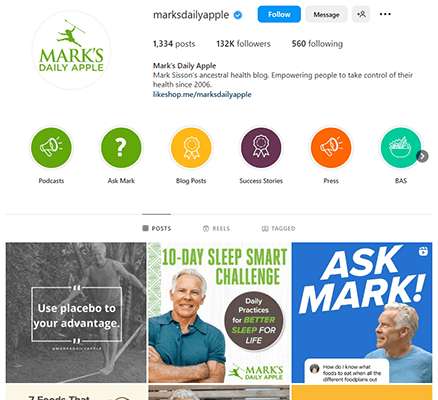
Primal Kitchen is active on these platforms as well, but their engagements aren’t much better, except for Instagram where the brand receives hundreds of likes per post.
4. Diary of a Fit Mommy
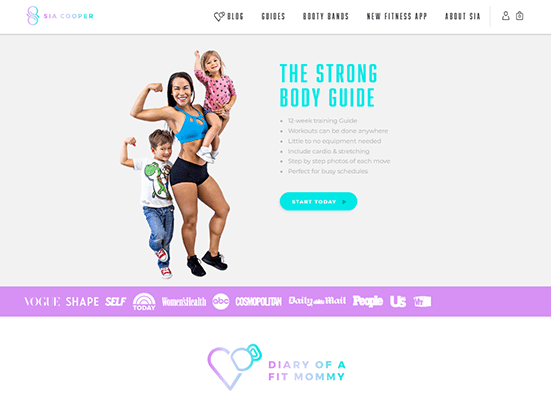
DA: 53 | Traffic: 130,000 per month | Load Time: 1.39s | CMS: WordPress
Diary of a Fit Mommy is a hub for fitness tips and meal plans with a focus on the health and fitness goals of women.
It was founded by Sia Cooper, who originally fell in love with blogging by documenting her weight loss journey following nursing school.
She ultimately fell out of blogging but picked the hobby back up after becoming pregnant, and this time, it stuck.
Now, Diary of a Fit Mommy is a professional blog that’s been featured by Vogue, Shape, Self, The Today Show, Women’s Health, Cosmopolitan and more.
Content
Diary of a Fit Mommy publishes content to several primary categories, including Diet, Fitness, Lifestyle, Little Ones, Pregnancy, Postpartum, Travel and Wellness.
These days, Sia mostly publishes workout tips, recipes and life updates, but the blog has plenty of posts dedicated to different exercises and healthy living.
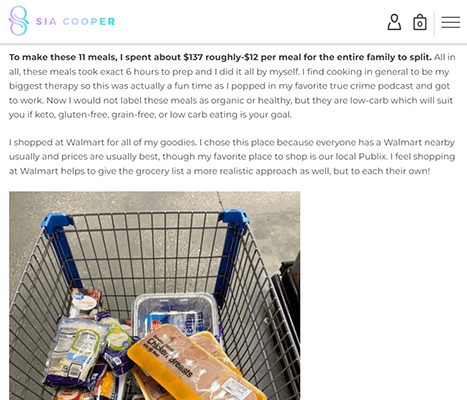
Most posts are written in short-form format with a few (and sometimes zero) images.
Income streams
Diary of a Fit Mommy has quite a few income streams, including advertising and affiliate links.
The blog uses sticky ads in the sidebar and at the bottom of the viewport as well as a few ads between paragraphs.
Sia also offers a few products, including ebooks that cost $22.99-$79.99 each.
She also has her own line of fitness bands and a fitness app that has in-app purchases.
Social media activity
Diary of a Fit Mommy is active on Facebook, Twitter, Instagram, Pinterest and YouTube.
Her best numbers come from Instagram, where she has 1.1 million followers and receives thousands of likes per post.
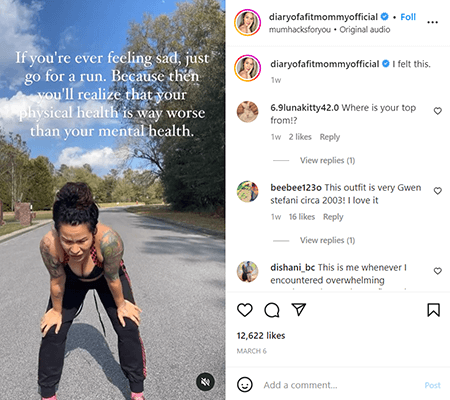
5. Bad Yogi
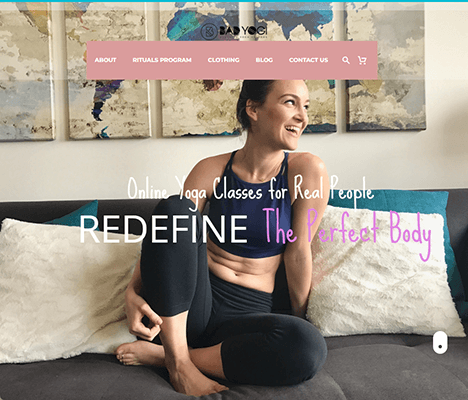
DA: 46 | Traffic: 104,200 per month | Load Time: 2.35s | CMS: WordPress
Bad Yogi is a fitness community centered around yoga.
It was founded by a woman named Erin who published a popular article on The Huffington Post that shone a light on the yoga community and all of its faults.
This is why she calls herself a “bad yogi.”
When she joined forces with her French partner Adrien to launch an alternative yoga blog, she kept the name.
She had been a yoga instructor for over 13 years, and he had entrepreneurial experience.
Now, Bad Yogi is a leading yoga blog for fitness enthusiasts and average folks alike to dabble in the world of yoga without judgment.
Content
Bad Yogi’s topics are depicted quite well by its primary categories: Yoga, Fitness, Food & Recipes, and Motherhood & Baby.
And yes, the blog does publish other fitness and wellness tips besides yoga, including full-body workouts and posts about mental health.
It’s also a partial lifestyle blog for Erin.
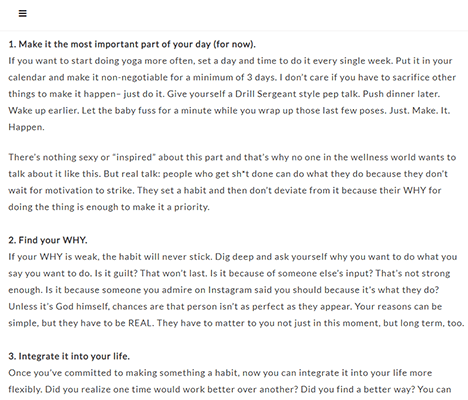
The majority of posts are published under Erin’s name.
Most are written in short-form format and feature original images.
Some posts have a lot of images while others use none.
Income streams
Bad Yogi’s entire revenue strategy is dependent on fitness programs.
One is a 60-day health and fitness journey that includes lessons on yoga and self care. This costs $149.
The other is a larger fitness program that includes yoga and weight training exercise guides and meal plans. This one costs $179.
Social media activity
Bad Yogi is active on Facebook and YouTube.
The majority of her engagements come from Facebook where she receives hundreds of likes per post.
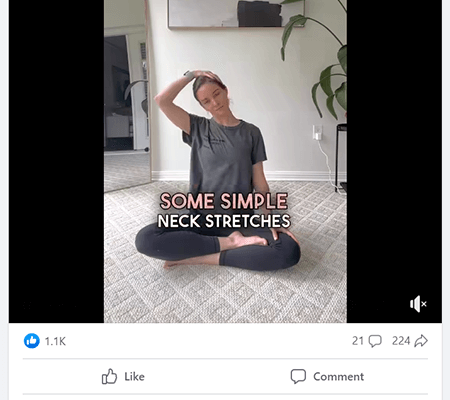
This is surprising as the majority of fitness blogs struggle with receiving engagements from Facebook.
6. Love Sweat Fitness
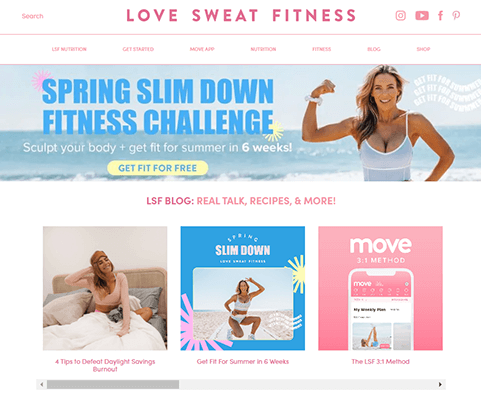
DA: 48 | Traffic: 88,900 per month | Load Time: 1.11s | CMS: WordPress
Love Sweat Fitness is a fitness community targeted toward women that offers free workouts, meal plans and lifestyle advice.
The blog and community was founded by Katie Dunlop, who started following a healthier lifestyle as a way to shed a little of the extra weight she had gained.
Now, Katie’s a certified personal trainer, and the LSF community is filled with at-home workouts and other resources.
Content
Love Sweat Fitness’ primary categories perfectly sum up the primary topics the blog typically covers: Fitness, Nutrition, Lifestyle and Travel.
There’s even a category called Printables, which acts as a hub for workout schedules and motivational wallpapers the blog offers.
The blog mostly publishes workout challenges and nutritional guides.
New posts are published every few weeks or so, and most posts are published under Katie’s name or an author name titled “Team LSF.”
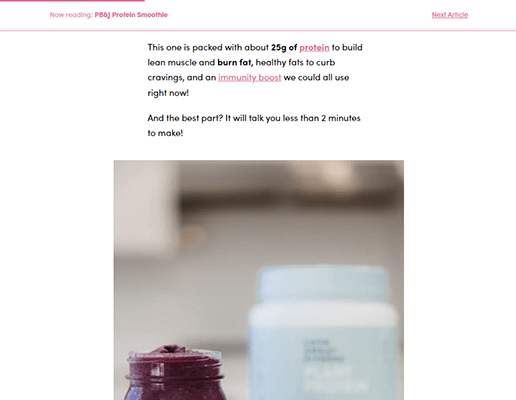
Blog posts themselves are short and use high-quality images typically taken by Katie herself or members of her team.
Income streams
Love Sweat Fitness has its own line of health and fitness products. This includes protein powders and fitness equipment, such as foam rollers.
You’ll also find meal and workout plans in the shop. They’re all available as ebooks.
The nutrition-based ebooks are typically available as regular meal plans or meal plans catered to special diets, such as vegan and hypothyroidism, the latter of which Katie herself has had to learn to navigate throughout her fitness journey.
The blog also has its own app that offers free workouts and exclusive content for premium users.
There are a few affiliate links here and there from the past, but the blog seems to rely on its own products for revenue over other income streams these days.
Social media activity
Love Sweat Fitness is active on Instagram, YouTube, Facebook and Pinterest.
The brand receives a few hundred likes per post on Instagram.
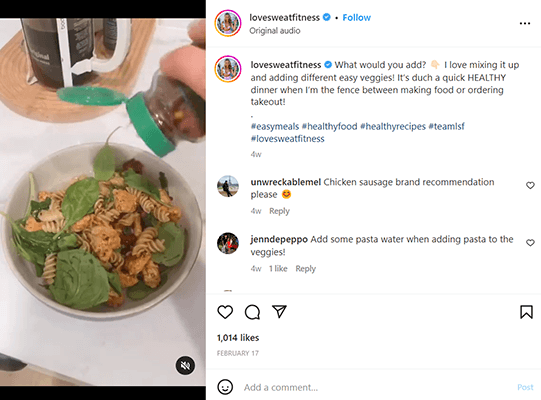
They have over 700,000 subscribers on YouTube and typically receive thousands of views per video.
7. keep it simpElle
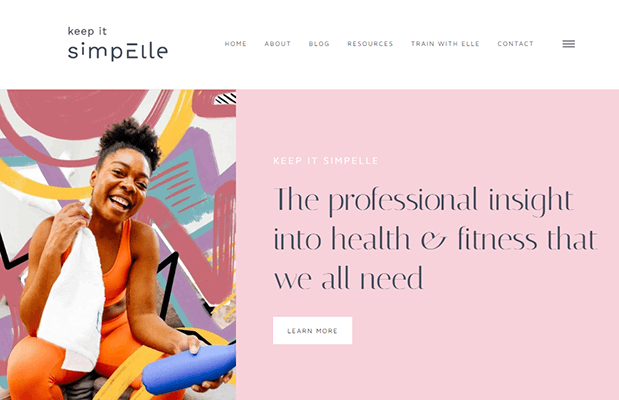
DA: 42 | Traffic: 38,100 per month | Load Time: 736ms | CMS: WordPress
keep it simpElle is a clever twist on the average fitness blog.
While it does offer workouts, fitness guides, and health and lifestyle-related articles, it also offers insight into the health and fitness industry as a whole.
That’s because the blog’s founder Elle Linton has experience working with big names in the fitness industry, including a project she worked on with Nike in which her objective was to encourage university-aged women to become more active.
This is what inspired Elle to start her blog.
Now, she has several certifications, has written for larger publications like Stylist, has been featured in editorials like Marie Claire and has won numerous awards.
Content
Many of keep it simpElle’s primary categories are geared toward the fitness industry.
It starts with the Business of Fitness. This category not only shares insights into the fitness industry, it also has plenty of articles that teach readers how to start and run their own fitness businesses.
Elle’s own fitness content can be found under the categories of Fitness, Cycling and Running.
In fact, some of Elle’s qualifications for offering training as a service are related to cycling, including a Breeze Ride Leader Award L1 and a Level 2 Award in Coaching for British Cycling.
keep it simpElle also publishes plenty of recipes and health guides just as any other health and fitness blog does.
You’ll also find plenty of articles similar to those of a lifestyle blog under the categories Lifestyle and Travel.
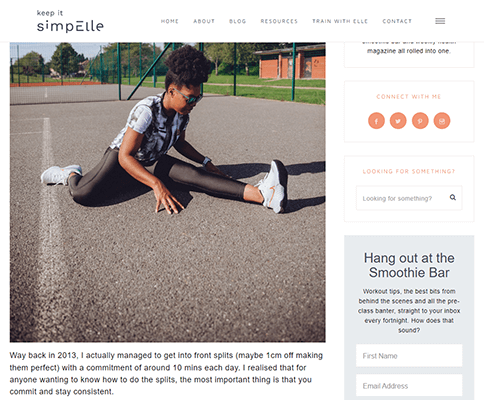
As for the articles themselves, the blog publishes medium and short-form posts, and uses a combination of professionally-shot photos and high-quality stock images.
Income streams
keep it simpElle uses ads and affiliate links just as any other fitness blog does.
There’s an ad that floats in the sidebar and another that sticks to the bottom of the viewport as you scroll.
There are also a few fixed ads in the body section of each post.
As a fitness professional, Elle also partners with brands, including British Cycling, WeWork, MyProtein, Strava, Strictly Swimming and more.
She also generates her own revenue with courses.
These include online classes participants can attend live as well as professional on-demand workout videos.
Social media activity
keep it simpElle is active on Facebook, Twitter, Pinterest and Instagram.
However, the blog receives very few engagements across all platforms, including only a few dozen likes per post on Instagram.
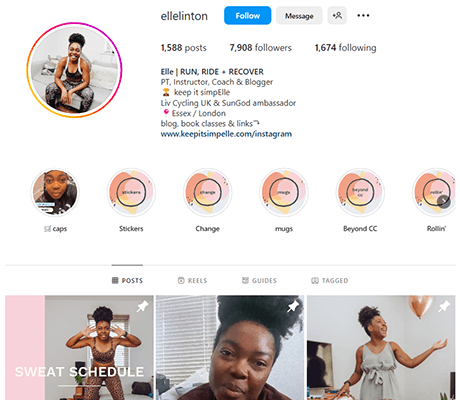
Final thoughts
That concludes our list of the best health and fitness blog examples.
We hope a few of these examples have inspired you to start your own fitness blog or at least gave you a few ideas on how to take an existing health and fitness blog to the next level.
Let’s talk about a few key takeaways if not.
The first are the types of content health and fitness blogs publish.
Some only publish short-form posts while others publish proper guides with professionally-shot photos.
Ultimately, you should publish the types of posts that make sense for your audience and schedule, but it’s clear there’s plenty of room in the health and fitness niche for new authoritative blogs to emerge with in-depth, long-form content.
So, if you’re trying to build your own fitness blog, consider straying away from these examples and focus on long-form content for a while.
The second takeaway, as you can imagine, is how blogs in this niche make their money.
Advertising and affiliate marketing are still popular options for fitness blogs, but this industry is full of blogs who create their own success.
This includes blogs who go on to create their own national health-food chains to blogs who offer professional ebooks and online courses.
Consider where you’re at as a blogger, and launch a product that makes sense for your budget and audience.
This could be live coaching sessions, ebooks (and even physical books), online courses, a membership program or even your own line of products.
No matter what you choose, it’s best to get on it sooner rather than later as it’s clear these are prominent revenue streams for fitness blogs, and you don’t want to find yourself trailing behind the competition.
How social media affects health and fitness blogs
Let’s talk about your relationship with social media.
Many of the blogs on this list don’t receive many engagements from any social media platform.
This is a trend across the entire blogging industry. Blogs that have no trouble generating traffic on their websites struggle to see the same level of interest on social media.
This means a few things for your growing health and fitness blog.
- You don’t need an active following on social media to succeed as a blogger.
- There’s plenty of room for you to surpass your biggest competitors by beating them where they aren’t receiving traffic.
Many of the blogs on this list don’t receive traffic for one simple reason.
Well, there are probably a few different reasons, but the main one is that they put themselves out there as a brand rather than an individual.
If you browse the Instagram profiles of lifestyle, beauty and fashion bloggers, you’ll find plenty of engagements.
That’s because these bloggers treat their Instagram accounts as personal accounts rather than as a tool for driving traffic to their latest blog posts.
Consider this as you start dabbling in the world of social media marketing.
That, and many health and fitness blogs don’t seem to have made their way over to TikTok just yet, so there’s still plenty of room for you to find a following on there.
Related posts from this series:



